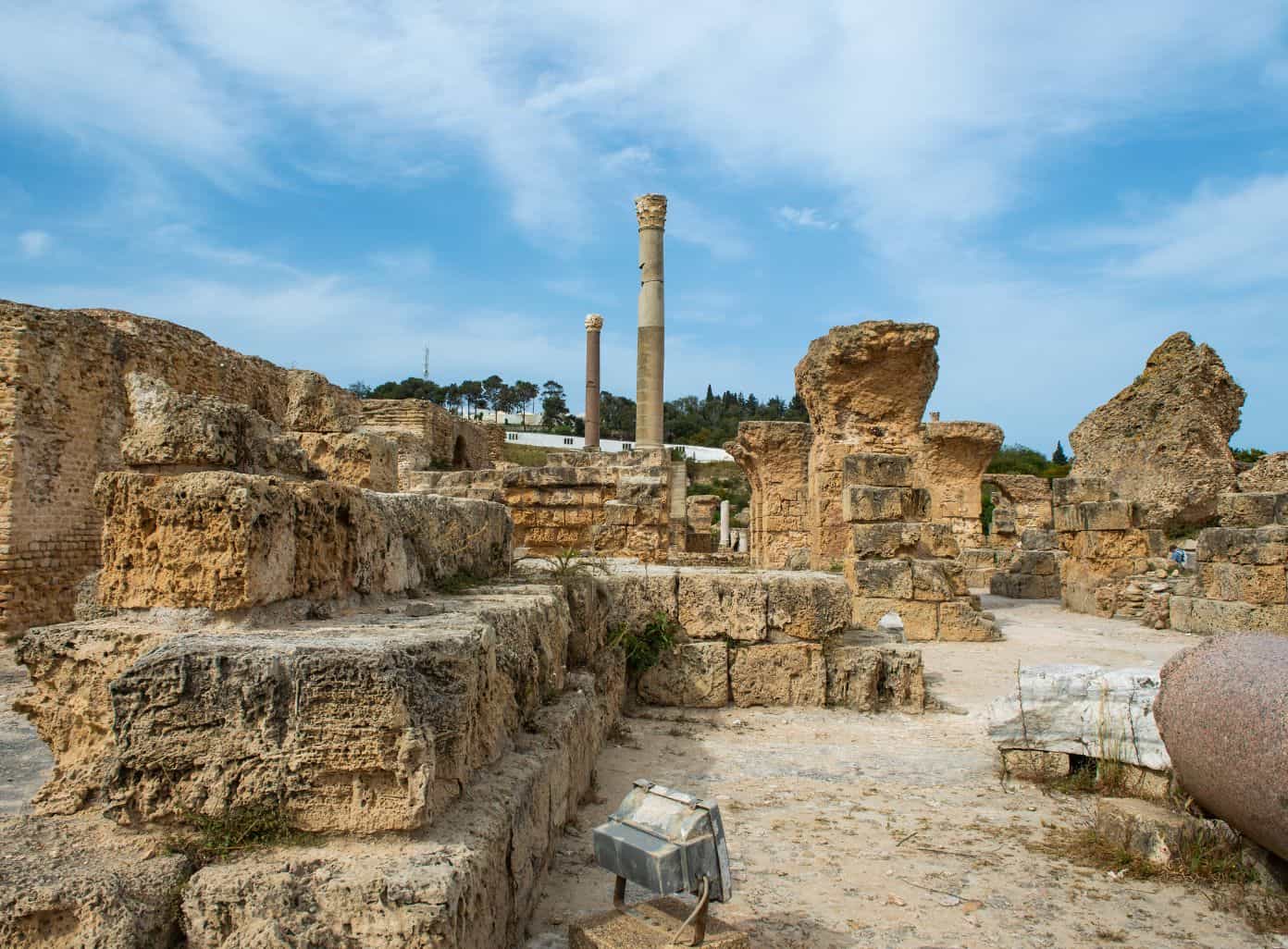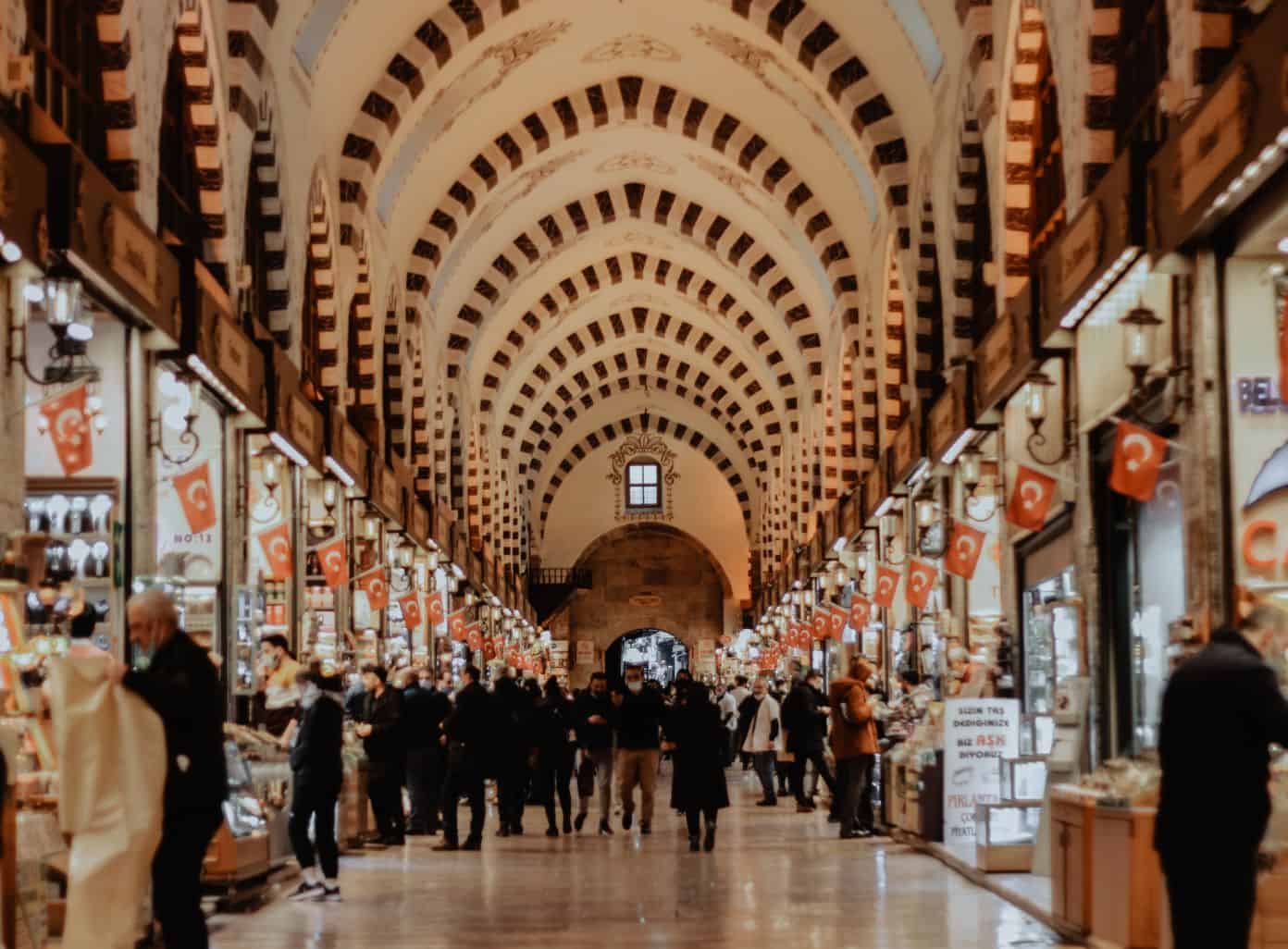Exploring Turkey’s Cultural Diversity
Turkey’s cultural landscape is a mesmerizing tapestry of traditions, history, and influences that have shaped its identity over the centuries. From its vibrant bazaars to its stunning architecture, Turkey’s cultural kaleidoscope is a feast for the senses. In this section, we will delve into the introduction of Turkey’s cultural kaleidoscope and explore the rich history and influences that have contributed to its diversity.

Introduction to Turkey’s Cultural Kaleidoscope
Turkey is a country that bridges two continents, Europe and Asia, making it a unique blend of Eastern and Western cultures. Its strategic location has made it a melting pot of civilizations throughout history. From the ancient Hittites and Greeks to the Byzantines and Ottomans, Turkey has been home to numerous empires, each leaving its mark on the country’s cultural heritage. Today, Turkey stands as a testament to its rich tapestry of traditions, customs, and artistic expressions.
One of the remarkable aspects of Turkey’s cultural diversity is its ability to preserve and celebrate its heritage while embracing modern influences. This fusion of old and new can be witnessed in various facets of Turkish life, from its cuisine to its art and architecture. Exploring Turkey’s cultural kaleidoscope is an invitation to embark on a captivating journey that reveals the layers of history and the vibrant tapestry of traditions that make up this fascinating country.
The Rich History and Influences
Turkey’s cultural diversity is deeply rooted in its rich history, which spans thousands of years. The region that is now Turkey has been home to numerous civilizations, each contributing to the country’s cultural fabric. From the ancient ruins of Ephesus and Pergamon to the grandeur of Ottoman architecture in Istanbul, Turkey’s history is a testament to the remarkable legacy left by those who came before.
The influences on Turkish culture are as diverse as the empires that once ruled the land. The Byzantine Empire, with its stunning mosaics and Orthodox Christianity, has left an indelible mark on Turkey’s art and architecture. The Ottoman Empire, known for its magnificent palaces and mosques, has shaped the country’s identity and religious traditions. The Seljuks, Persians, and Greeks have also played significant roles in shaping Turkey’s cultural mosaic.
Today, Turkey’s cultural richness can be witnessed in its vibrant festivals, diverse culinary traditions, and thriving art scene. From the colorful celebrations of religious festivals to the mouth-watering flavors of traditional Turkish dishes, Turkey’s cultural heritage is alive and thriving.
By exploring Turkey’s cultural kaleidoscope, visitors can immerse themselves in a journey that celebrates the country’s diverse traditions and customs. From the bustling markets that showcase traditional crafts and souvenirs to the awe-inspiring architecture that tells the story of the country’s past, Turkey offers a cultural experience that is both captivating and enlightening.
Continue to explore the various aspects of Turkey’s cultural diversity as we delve into the regional differences, Turkish cuisine, art and architecture, festivals and celebrations, traditional music and dance, as well as cultural etiquette and customs. There is truly something for everyone in this fascinating country.

Regional Differences
Turkey’s cultural diversity is greatly influenced by its geographic features and the unique traditions and customs that have developed in different regions of the country.
The Impact of Geography
The geography of Turkey plays a significant role in shaping its cultural diversity. With its location at the crossroads of Europe and Asia, Turkey has been a melting pot of various civilizations throughout history. The country is divided into seven distinct geographical regions, each with its own characteristics and cultural nuances.
The Marmara region, encompassing Istanbul and its surroundings, is a vibrant hub where East meets West. It is home to a blend of cultures and traditions, reflecting the historical influence of both Byzantine and Ottoman empires. Istanbul, the largest city in Turkey, stands as a testament to this cultural fusion and offers a rich tapestry of historical landmarks, markets, and souvenirs.
Moving towards the Aegean region, which includes cities like Izmir and Ephesus, the culture is heavily influenced by ancient Greek civilization. The region boasts stunning coastal landscapes, historical sites such as the ancient city of Ephesus, and a vibrant arts scene. Visitors can explore the rich history and architecture of the region, which showcases remarkable examples of Greek and Roman influences.
As we venture eastward, we reach the Anatolian region, known for its diverse landscapes and historical heritage. This region is home to the capital city of Ankara, where visitors can explore the fascinating history and art of Turkey at various museums and galleries. The Anatolian region also offers breathtaking natural wonders, including picturesque mountains and beautiful coastlines.
In the Mediterranean region, which includes popular tourist destinations like Antalya and Alanya, visitors can experience the unique blend of ancient history and stunning coastal beauty. This region is renowned for its pristine beaches, crystal-clear waters, and ancient ruins such as the ancient city of Perge. It’s a perfect destination for those seeking a relaxing vacation with a touch of history.
Other regions, such as the Black Sea region, the Central Anatolia region, the Southeastern Anatolia region, and the Eastern Anatolia region, each have their own distinctive cultural identities and traditions. From the lush green landscapes of the Black Sea region to the majestic mountains of Eastern Anatolia, each region offers a unique cultural experience.
Unique Traditions and Customs
The regional differences in Turkey are not just limited to geographical features. Each region has its own set of unique traditions and customs that have been passed down through generations. These traditions encompass various aspects of life, including food, music, dance, clothing, and celebrations.
For example, the Black Sea region is known for its vibrant folk music and energetic dances, such as the horon. The Southeastern Anatolia region, on the other hand, is famous for its rich culinary heritage, with dishes like kebab and baklava taking center stage. The Central Anatolia region is renowned for its traditional handicrafts, including pottery and carpets. These regional traditions and customs add to the cultural kaleidoscope of Turkey, making it a fascinating destination for travelers.
By exploring the regional differences in Turkey, visitors can immerse themselves in the diverse cultural tapestry of the country. Whether it’s experiencing the unique traditions of the Black Sea region or indulging in the mouthwatering cuisine of the Southeastern Anatolia region, each region offers a distinct cultural experience that contributes to the overall richness of Turkey’s cultural heritage.
Turkish Cuisine
When exploring the diverse culture of Turkey, one cannot ignore the rich and flavorful Turkish cuisine. Influenced by a blend of Middle Eastern, Mediterranean, Central Asian, and Balkan flavors, Turkish cuisine offers a tantalizing array of dishes that cater to various tastes and preferences.
Traditional Turkish Dishes
Traditional Turkish cuisine is known for its use of fresh ingredients, aromatic herbs and spices, and a balance of flavors. Some of the must-try traditional Turkish dishes include:
| Dish | Description |
|---|---|
| Kebabs | A variety of grilled or skewered meats, such as shish kebab, adana kebab, and doner kebab, usually served with rice or bread. |
| Baklava | A sweet pastry made of layers of filo dough filled with chopped nuts and sweet syrup or honey. |
| Manti | Small dumplings filled with ground meat or cheese, usually served with yogurt and a drizzle of butter or tomato sauce. |
| Pide | A Turkish-style flatbread topped with various ingredients, similar to pizza. |
| Dolma | Stuffed vegetables, typically grape leaves or bell peppers, filled with a mixture of rice, herbs, and spices. |
| Turkish Delight | A gel-like candy made with starch, sugar, and various flavors like rosewater, pomegranate, or pistachio. |
Regional Culinary Specialties
In addition to the traditional dishes, Turkish cuisine boasts a wide range of regional specialties that showcase the country’s culinary diversity. Each region in Turkey has its own unique flavors and ingredients. Here are some notable regional culinary specialties:
| Region | Culinary Specialties |
|---|---|
| Istanbul | Doner kebab, balik ekmek (fish sandwich), and Turkish delight. |
| Cappadocia | Testi kebab (meat cooked in a clay pot), manti (dumplings), and soganlama (onion stew). |
| Ankara | Etli ekmek (meat bread), iskender kebab, and ankara tavasi (a lamb dish). |
| Marmara Region | Lahmacun (Turkish pizza), simit (sesame seed-covered bread rings), and manti (dumplings). |
| Aegean Region | Tandir kebab, deniz börülcesi (samphire salad), and kumru (a type of sandwich). |
| Mediterranean Region | Adana kebab, meze (assorted appetizers), and lahana sarma (cabbage rolls). |
| Black Sea Region | Hamsi pilav (anchovy pilaf), kuymak (cheese fondue), and muhlama (cornmeal and cheese dish). |
| Southeastern Anatolia | Lahmacun, kebabs, and baklava. |
Exploring the culinary delights of Turkey is an essential part of immersing oneself in the country’s vibrant culture. From kebabs and sweet pastries to regional specialties, Turkish cuisine offers a delightful journey for the taste buds. Make sure to try these traditional dishes and regional culinary specialties during your visit to experience the true flavors of Turkey.
Art and Architecture
Turkey’s rich cultural heritage is reflected in its captivating art and awe-inspiring architecture. From the grandeur of Ottoman architecture to the exquisite beauty of Turkish calligraphy and illumination, the country offers a fascinating journey through artistic expression.
Ottoman Architecture
Ottoman architecture is renowned for its grandeur and magnificence. This architectural style flourished during the Ottoman Empire, leaving a lasting impact on Turkey’s landscape. The Ottoman architects skillfully combined elements from Byzantine, Islamic, and Seljuk architectural traditions to create their unique style.
One of the most iconic examples of Ottoman architecture is the Hagia Sophia in Istanbul. Originally built as a Byzantine cathedral, it was later converted into a mosque during the Ottoman era. The Hagia Sophia’s massive dome, intricate mosaics, and towering minarets showcase the architectural brilliance of the time.
Another notable masterpiece of Ottoman architecture is the Topkapi Palace, also located in Istanbul. This sprawling complex served as the residence of the Ottoman sultans for centuries. With its stunning courtyards, opulent chambers, and beautiful tilework, the Topkapi Palace stands as a testament to the architectural prowess of the Ottoman Empire.
Turkish Calligraphy and Illumination
Turkish calligraphy and illumination are highly regarded as important forms of art in Turkey. Calligraphy, the art of beautiful writing, has a long history in Turkish culture. Skilled calligraphers use special pens and ink to create intricate designs, transforming words into visually stunning works of art. This art form is often used to transcribe religious texts, such as the Quran, as well as to adorn mosques and other religious buildings.
Illumination, on the other hand, involves the embellishment of calligraphy through the use of vibrant colors and intricate patterns. This technique often incorporates motifs inspired by nature, geometry, and geometric arabesque designs. Turkish illumination can be found adorning manuscripts, architectural elements, ceramics, and other decorative objects.
To truly appreciate Turkish calligraphy and illumination, a visit to the Museum of Turkish Calligraphy and Islamic Arts in Istanbul is highly recommended. This museum houses a remarkable collection of calligraphic masterpieces and illuminated manuscripts, providing an insight into the rich artistic heritage of Turkey.
The art and architecture of Turkey not only showcase the country’s historical and cultural significance but also offer a visual feast for visitors. Exploring the mesmerizing world of Ottoman architecture and the intricate art of Turkish calligraphy and illumination is an essential part of experiencing the cultural kaleidoscope that Turkey has to offer.
Festivals and Celebrations
Turkey is a country known for its vibrant festivals and celebrations, which play a significant role in showcasing the diverse cultural heritage of the nation. From religious festivals to national and local celebrations, these events bring people together and provide a unique insight into Turkish culture.
Religious Festivals
Religion holds an important place in Turkish society, and religious festivals are celebrated with great enthusiasm and joy. One of the most significant religious festivals is Eid al-Fitr, also known as Ramazan Bayramı, which marks the end of Ramadan, the holy month of fasting for Muslims. During this festival, families gather to share meals, exchange gifts, and visit loved ones. Another important religious festival is Eid al-Adha, or Kurban Bayramı, which commemorates the willingness of Ibrahim (Abraham) to sacrifice his son as an act of obedience to God. It is a time for communal prayers, feasting, and the distribution of meat to the less fortunate.
National and Local Celebrations
Turkey also celebrates a variety of national and local events that showcase the country’s rich history, cultural traditions, and unity. One such celebration is Republic Day, observed on October 29th, which marks the establishment of the Republic of Turkey in 1923. This day is filled with parades, fireworks, concerts, and other festivities across the country.
Another notable event is Victory Day, celebrated on August 30th, to commemorate the victory in the Battle of Dumlupınar, a significant turning point in the Turkish War of Independence. On this day, ceremonies and events take place, paying tribute to the bravery and sacrifices of the Turkish people.
In addition to national celebrations, Turkey also has numerous local festivals that highlight the unique traditions and customs of different regions. For example, the Kirkpinar Oil Wrestling Festival in Edirne, a centuries-old tradition, showcases the skills of Turkish oil wrestlers. The Cappadocia Hot Air Balloon Festival in Göreme mesmerizes visitors with its breathtaking hot air balloon displays against the stunning landscape of Cappadocia.
By participating in these festivals and celebrations, visitors to Turkey can immerse themselves in the country’s cultural tapestry and witness the warmth and hospitality of the Turkish people.
Exploring the festivals and celebrations of Turkey is just one way to experience the country’s rich and diverse cultural heritage. To make the most of your visit, be sure to check out other aspects of Turkish culture, such as traditional music and dance, art and architecture, and the delectable Turkish cuisine.
Traditional Music and Dance
Turkey is known for its vibrant and diverse cultural traditions, including its rich musical heritage and captivating traditional dances. In this section, we will explore two key aspects of Turkey’s cultural tapestry: Turkish folk music and traditional dances.
Turkish Folk Music
Turkish folk music holds a special place in the hearts of the Turkish people. It reflects the unique blend of influences from various regions and ethnicities within the country. Turkish folk music is characterized by its melodic beauty and heartfelt lyrics, often accompanied by traditional instruments such as the saz (a long-necked string instrument), baglama (a plucked string instrument), and kemenche (a bowed string instrument).
Each region in Turkey has its own distinct style of folk music, showcasing the diverse cultural heritage of the country. From the energetic and lively tunes of the Black Sea region to the soulful melodies of Anatolia, Turkish folk music resonates with both locals and visitors alike. It is not uncommon to hear live performances of folk music in traditional settings, such as local festivals and gatherings.
Traditional Dances
Traditional dances are an integral part of Turkish culture, representing the rich history and cultural diversity of the country. These dances are often performed in colorful costumes, accompanied by rhythmic music and energetic movements. Let’s explore some of the most well-known traditional dances in Turkey:
- Horon: Horon is a lively and energetic dance native to the Black Sea region of Turkey. It is characterized by quick footwork, synchronized movements, and a dynamic rhythm. Horon dances are often performed in a circle, with dancers holding hands and creating an exhilarating atmosphere.
- Halay: Halay is a popular group dance that can be found in various regions of Turkey. It is often performed at weddings, celebrations, and other joyful occasions. Halay involves a chain of dancers holding hands or linking arms and moving in a line or circle. The dance starts slowly and gradually increases in speed, creating a sense of excitement and unity.
- Zeybek: Zeybek is a traditional dance originating from western Anatolia. It is a solo male dance that showcases strength, agility, and bravery. Zeybek dancers typically wear traditional attire, including a distinctive headdress and a colorful vest. The dance movements mimic the actions of a warrior, symbolizing the courage and heroism of the Turkish people.
- **Bar: **Bar is a graceful and elegant dance performed with a pair of wooden spoons, known as “kaşıklar” in Turkish. The dancers hold the spoons in their hands and strike them together in rhythmic patterns, creating a unique percussion sound. Bar dances often tell stories and depict scenes from daily life through expressive movements.
These are just a few examples of the captivating traditional dances that can be experienced in Turkey. Each region has its own unique dances, costumes, and musical styles, making the cultural landscape of Turkey truly diverse and enchanting.
Immerse yourself in the mesmerizing world of Turkish folk music and traditional dances to gain a deeper appreciation for the cultural heritage of this remarkable country. Whether you witness a live performance or participate in a dance workshop, you will undoubtedly be captivated by the beauty and artistry of Turkey’s musical and dance traditions.
Cultural Etiquette and Customs
When visiting Turkey, it’s important to familiarize yourself with the cultural etiquette and customs to ensure a respectful and enjoyable experience. Turkish people take great pride in their traditions and values, and being mindful of these customs can help you connect with the local culture. Two key aspects to consider are greetings and gestures and the concept of Turkish hospitality.
Greetings and Gestures
Turkish culture places a strong emphasis on respect and politeness, which is reflected in their greetings. A common way to greet someone in Turkey is by saying “Merhaba” (Hello) or “Günaydın” (Good morning) with a warm smile. Handshakes are also common, particularly in formal settings. When greeting someone, it is customary to shake hands while maintaining eye contact as a sign of respect.
In more conservative or traditional settings, especially when greeting older individuals or those of higher status, it is customary to use a slight bow or nod of the head while shaking hands. This gesture shows deference and is considered a sign of respect.
During conversations, it is common for Turks to maintain a closer proximity compared to some other cultures. Personal space is generally smaller, and it is acceptable to stand or sit in closer proximity while engaging in conversation. This closeness is seen as a way to show interest and engagement.
Turkish Hospitality
Turkish hospitality, known as “Misafirperverlik,” is deeply ingrained in Turkish culture. Turks take great pride in welcoming guests and making them feel comfortable. If invited to someone’s home, it is customary to bring a small gift such as flowers, chocolates, or pastries as a token of appreciation. This gesture is well-received and demonstrates your gratitude for their hospitality.
When entering a Turkish home, it is customary to remove your shoes at the entrance, as this is considered a sign of respect and cleanliness. You may be offered slippers to wear inside the house, which should be accepted graciously. It is also customary to wait for the host to invite you to sit before taking a seat.
During meals, Turkish hospitality shines. Guests are often treated to a variety of delicious dishes and generous portions. It is polite to try a bit of everything and to compliment the host on the food. Refusing a second helping may be seen as a polite gesture, but accepting it is often appreciated. Remember to thank your host for their hospitality before leaving.
Understanding and respecting Turkish customs and etiquette can go a long way in fostering positive interactions and deepening your cultural experience. By embracing their greetings and gestures, and appreciating the warmth of Turkish hospitality, you will be able to connect with the local people and truly immerse yourself in the vibrant culture of Turkey.
To explore more about Turkey’s cultural diversity, don’t miss our articles on Turkish cuisine, art and architecture, festivals and celebrations, and traditional music and dance.
Must-Visit Cultural Sites
When exploring the diverse cultural landscape of Turkey, there are a multitude of must-visit cultural sites that offer a glimpse into the country’s rich history and artistic heritage. From historical landmarks to museums and galleries, these sites provide an immersive experience that showcases the depth and beauty of Turkey’s culture.
Historical Landmarks
Turkey is home to numerous historical landmarks that have shaped its cultural identity. These sites are a testament to the country’s fascinating past and offer visitors a chance to step back in time. Some of the must-visit historical landmarks in Turkey include:
| Landmark | Location |
|---|---|
| Ephesus | Ephesus |
| Cappadocia | Cappadocia |
| Pergamon | Pergamon |
| Castles of Turkey | Turkey Castles |
These historical sites not only boast impressive architectural feats but also offer a glimpse into the various civilizations that have left their mark on Turkey over the centuries. Exploring these landmarks allows visitors to appreciate the country’s rich historical legacy.
Museums and Galleries
For those seeking a deeper understanding of Turkey’s cultural heritage, the country’s museums and galleries offer a treasure trove of artistic wonders. From ancient artifacts to contemporary art, these institutions showcase the diverse artistic expressions that have flourished throughout Turkey’s history.
Some of the noteworthy museums and galleries in Turkey include:
| Museum/Gallery | Location |
|---|---|
| Istanbul Modern | Istanbul Modern |
| Museum of Anatolian Civilizations | Anatolian Civilizations Museum |
| Sakıp Sabancı Museum | Sakıp Sabancı Museum |
These cultural institutions house a wide range of exhibits that showcase both traditional and contemporary Turkish art, providing visitors with a deeper understanding of the country’s artistic heritage. Whether it’s exploring the works of renowned Turkish artists or delving into the ancient artifacts that tell the story of Turkey’s past, a visit to these museums and galleries is sure to be a rewarding cultural experience.
By visiting these must-visit cultural sites in Turkey, visitors can immerse themselves in the country’s rich history, artistic traditions, and diverse cultural tapestry. From exploring ancient ruins to admiring masterpieces in museums and galleries, these experiences offer a deeper appreciation of Turkey’s vibrant cultural heritage.


